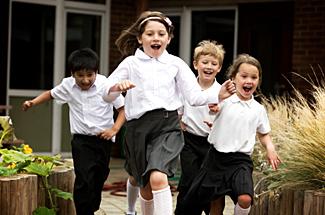
The games children play in Russia often depict Russian culture and society. You might even want to share one of these games with your own children to teach them a little about their heritage or a different culture.
Games Children Play in Russia
While many of the games Russian children play are very different, some still have many of the same concepts of American games for children. Your children are sure to pick up on similarities as they are learning these new games.
Boaire
Played by children age nine to 14 years old (or so), Boaire is a game that is similar to Red Rover. In Russian culture, this game depicts marriage, with one team approaching the other in demand of a bride. It shows the strength and significance of the group working together for an end goal.

- Children are divided into two teams, facing each other.
- With their hands linked, they call across to the other team, and invite one person to join them. They typically do this with a rhyme or a song.
- The requested team member comes running across to the other team and attempts to break through their grip. If that person succeeds, he gets to choose a player from the opposing team to take back to his own team. If he fails to break through, he must remain with the opposing team.
A slight variation on this game is called Caraway. In this game:
- All the children link hands in a circle.
- One player remains in the middle and tries to break through while the others sing a song and move in the circle.
- If the child breaks through, he gets to join the circle and another child must go to the middle.
P'yanitsa
This is much like the American card game of War. Typically, when children play this game, it's a two-player game.
- All of the cards are dealt to players, face down.
- Taking turns, each player turns the top card over, face up.
- Whoever has the highest-ranking card each time collects both cards, returning them to the bottom of their stack.
- The player who runs out of cards first is the loser.
Fipe
This game is similar to the American game of Tag.

- Children playing Fipe run away and hide from the "leader."
- The leader counts to 50 and begins looking for the others.
- As he finds them, he must touch them before they can get back to the counting place.
- If he touches someone, that child becomes the new leader.
Who Is Stronger?
This game is made of two teams with an equal number of children.
- One each team, the children line up behind one another and hold onto the body of the child in front of them.
- A line is drawn on the ground.
- The front members of both teams link hands, and both teams start pulling in opposite directions.
- Each child who is dragged across the line must become a member of the opposing team.
- The team that winds up with the most team members wins.
Traffic Light
This game shares a bit of similarity with the American game of Red Light, Green Light.
- A starting line is drawn, and all children must start behind this place.
- Approximately four to five more lines are drawn about 15 feet apart.
- The "leader" stands on the next line up from the starting line and calls out a color. Any children wearing this color can safely advance to the next line in front of them.
- Children who are not wearing this color on can attempt to make it to the next line by running. However, if the leader catches one of them, the two must trade places. The player who reaches the last line first is the winner.
Cossacks & Robbers
This game is best played in the woods where there are more places to hide.
- Children divide themselves into two teams. One group is Cossacks, and the other group is robbers.
- The Cossacks have a "camp," and one Cossack stays behind to keep watch.
- Robbers run away and hide somewhere, only to be sought after by the other Cossacks.
- Each robber who is caught is kept prisoner back at "camp."
- The game ends when all robbers are caught.
Common Games, Common Ground
Taking a closer look at these Russian games really shows that children around the world are very similar, and it also shows that perhaps Americans and Russians have more in common than they may realize. Gaining a better understanding of each other's cultures, even through something as simple as children's games, just might provide some common ground both cultures can use to build a better relationship.







